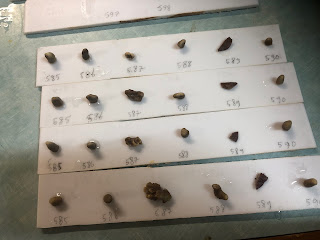The CATAIN paper: part 2
Well, in a case of serendipitous timing, the second CATAIN paper came out just a day after the first! My PhD student, Kharis, used CATAIN data collected over a year in Woods Hole to study the settlement and post-settlement mortality of four common species. Her results actually showed some cool and surprising patterns. Settlement was highest in the afternoon for all of her species and highest on a rising tide for two out of the four. That level of detail is super informative and was only possible because we used CATAIN. In addition, mortality was lower in Kharis' study than previous studies, possibly because CATAIN was deployed deeper. Overall, the study shows what is possible with CATAIN and reveals high-resolution patterns in fouling communities. This paper constitutes the first chapter of Kharis' dissertation, and I'm incredibly proud of her for publishing it! You can find the paper in Marine Ecology Progress Series : https://www.int-res.com/abstracts/meps/v711/p17-29/


.jpeg)

.jpeg)




